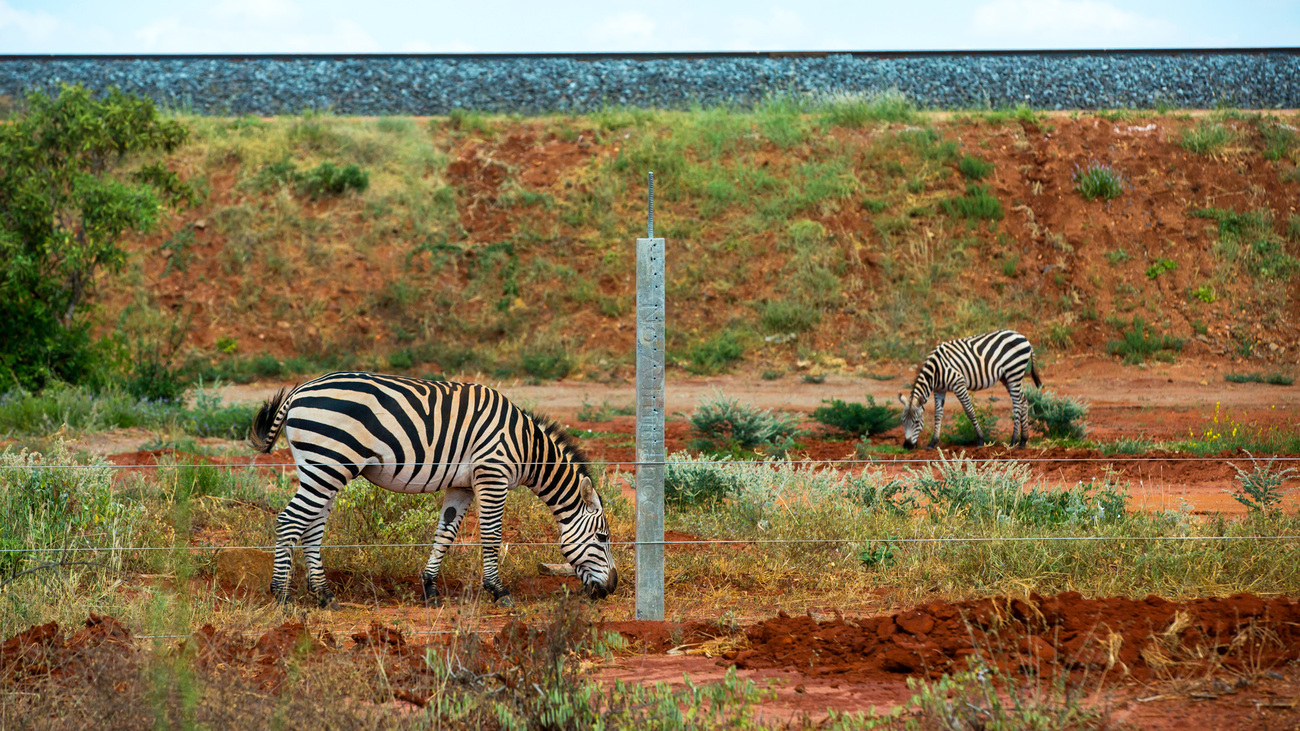Blog
Discover the four layers of the forest—and the animals living in it
Read moreGiraffes trapped by fences saved by community rangers

In late September 2023, during a routine patrol along the borders of the Olgulului Ololarashi Group Ranch (OOGR) in Amboseli, Kenya, IFAW-supported community wildlife rangers discovered 12 Masai giraffes lying helpless in the sweltering Amboseli heat. They were dying of thirst.
Trapped by fences along with antelopes and other small ungulates within an expansive private farm which straddles the Tanzanian border and the OOGR, the giraffes had been unable to reach a water source for some time. By the time the rangers arrived on the scene, 15 other giraffes had already perished.
‘Amboseli is a water-scarce area,’ Evan Mkala, IFAW’s East Africa programme manager explained. ‘During the drought, giraffes venture into new territories in search of food and water. Upon getting inside the fenced land, they found themselves with no water and no exit routes. This is what spelled doom for them.’
Providing water to giraffes, which easily drink 40 litres daily and require much more on a hot day, is a tall order. The rangers first contacted the Kenya Wildlife Service (KWS) and the farm owner to ensure a water delivery could be made to save these 12 dying animals. They made use of the IFAW mobile water truck, which serves the park, to facilitate the water delivery. However, with the soil moisture extremely low because of the prolonged drought, it was a drop in the ocean; most of the water got absorbed into the dry earth. So, the rangers negotiated with various stakeholders to provide 10 more truckloads to saturate the soil and ensure the giraffes received sufficient water.
‘That is how the giraffes managed to quench their thirst,’ said Patrick Sayialel, deputy director of the Olgulului Community Wildlife Rangers (OCWR). ‘Later, they were able to stand up and slowly start to move around.’

The rangers needed to break down a section of the fence to allow the giraffes to leave the area. Upon release, rangers monitored the animals for one week, ensuring they all returned to safety. Out of the 12 affected giraffes, eight managed to walk out of the fenced area. Meanwhile, the other four are thriving within the private farm, as the landowners have been giving them water.
Sayialel explained that fences have proved problematic in the landscape, citing prior incidents of giraffes getting entangled in them near the Tanzanian border. ‘Due to their height, giraffes seldom see fences and therefore become entangled in them,’ he said.
The proliferation of fences in wildlife habitats threatens animals in several ways. When giraffes get entangled in fences, they become an easy target for both natural predators and opportunistic poachers.
‘We must bring down the fences!’ Mkala said.
With commercial agriculture and changing land-use patterns sweeping through East Africa, wildlife corridors are being turned into private farmlands. It’s causing Africa’s majestic species to lose their homes and critical dispersal areas. In an increasingly urbanised world, the challenges facing nature are complex and demand a multi-dimensional approach.

While wildlife crime, climate change, and poaching continue to pose significant threats to biodiversity, habitat fragmentation is quietly decimating animal populations. This silent killer is under-reported by media and often overlooked.
But the sobering reality facing IFAW’s team of frontline conservationists protecting Amboseli is that critical wildlife dispersal areas are being lost because of shifting land-use plans, with little consideration for the impacts on the environment.
Maurice Nyaligu, IFAW’s head of programmes in East Africa, says the threats facing giraffes—habitat loss and poaching—are the same ones facing elephants. ‘To succeed with Room to Roam—an ambitious initiative that aims to protect Africa’s surviving savannah elephants and the people living alongside them by securing wildlife habitats—we must also break down all barriers that prevent collaboration between stakeholders to avert similar unfortunate incidences for wildlife.’
As for the community rangers, after the remarkable giraffe rescue effort, they immediately resumed their patrols within the vast wilderness area. This was just another day at the ‘office’ for Sayialel’s team, and another example of their dedication to securing a sustainable future for wildlife and communities in the beautiful yet fragile Amboseli ecosystem.
Our work can’t get done without you. Please give what you can to help animals thrive.
Unfortunately, the browser you use is outdated and does not allow you to display the site correctly. Please install any of the modern browsers, for example:
Google Chrome Firefox Safari